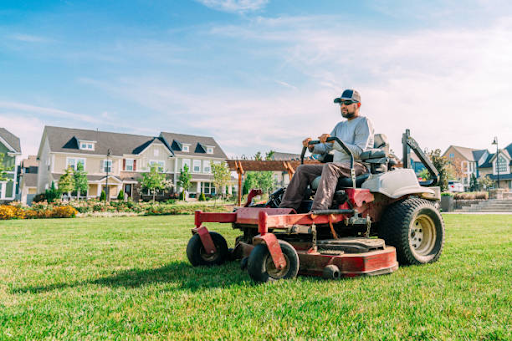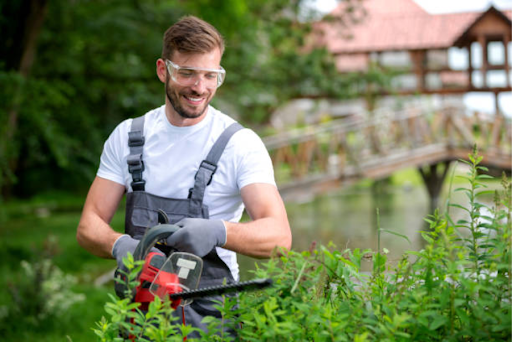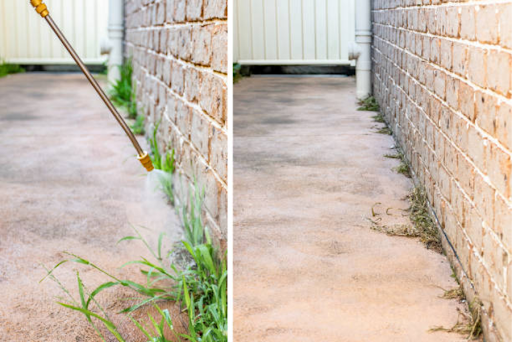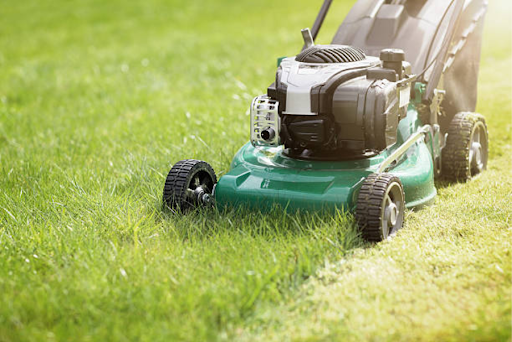Emerald Lawn-Scapes P.O. Box 174 Boonton, NJ 07005-1752
The Importance of Lawn Aeration: Why Your Lawn Needs It and How Emerald Lawn-Scapes Can Help
A lush, healthy lawn doesn’t just happen overnight. It requires consistent care, attention, and a strong foundation for growth. One of the most essential, yet often overlooked, components of lawn maintenance is lawn aeration. Aeration plays a vital role in ensuring that your lawn thrives, particularly in areas like Northern New Jersey, where soil types and weather conditions can sometimes create challenges for healthy grass growth.
In this blog, we’ll dive into the significance of lawn aeration, how it benefits your lawn, and why it’s a necessary step for maintaining vibrant and healthy grass. We’ll also explore how Emerald Lawn-Scapes, a trusted lawn care provider in Northern New Jersey, can help you achieve a healthy, thriving lawn through professional aeration services.
What is Lawn Aeration?
Lawn aeration is the process of perforating the soil with small holes to allow air, water, and nutrients to reach the grassroots more effectively. Over time, lawns can become compacted due to factors like foot traffic, heavy machinery, or natural soil compression. When soil becomes compacted, it can restrict root growth, reduce water infiltration, and hinder the absorption of essential nutrients.
Aeration involves removing small plugs of soil from your lawn and leaving them on the surface. These holes in the soil allow air to circulate more freely, helping roots to grow deeper, while improving drainage and nutrient uptake. Essentially, aeration creates pathways that help your grass and soil breathe, making it a vital practice for lawns that are struggling to thrive.
How Lawn Aeration Benefits Your Lawn
Lawn aeration provides numerous benefits that directly contribute to the health and longevity of your lawn. Here are the most significant advantages:
1. Improved Nutrient Absorption
One of the primary benefits of aeration is its ability to improve nutrient absorption. When the soil becomes compacted, it’s harder for water and nutrients to reach the grassroots. Aeration helps alleviate this by creating small channels in the soil, allowing nutrients, water, and air to penetrate deeper into the ground. As a result, your lawn can absorb essential nutrients more efficiently, which helps keep it green and vibrant.
2. Enhanced Root Growth
For grass to grow strong and healthy, it needs space for its roots to expand. Compacted soil can stunt root development, leading to weaker, less resilient grass. Aeration creates the space necessary for roots to grow deeper into the soil, making them stronger and better able to withstand drought and other environmental stresses. Deeper roots also improve the lawn’s ability to access water and nutrients, which can contribute to better overall lawn health.
3. Increased Oxygen Levels in the Soil
Oxygen is just as important for soil health as it is for us. When soil becomes compacted, the amount of oxygen in the soil decreases, which can cause roots to suffocate. Aeration helps reintroduce oxygen to the soil, which is essential for the survival and growth of beneficial soil microorganisms. These microorganisms, in turn, break down organic matter and contribute to the overall health of your lawn.
4. Better Drainage
Aeration can also help improve drainage in lawns with heavy or clayey soil. In compacted soils, water tends to pool on the surface, leading to waterlogged grass that can suffocate. By creating channels in the soil, aeration helps water flow more freely, reducing surface runoff and allowing water to reach the roots where it’s needed most.
5. Thicker, Healthier Grass
By promoting better root growth, nutrient absorption, and drainage, aeration helps your grass grow thicker and more resilient. A healthier lawn is better able to fight off weeds, pests, and diseases, creating a lush, green landscape that requires less effort to maintain over time.
Signs Your Lawn Needs Aeration
Not all lawns need aeration at the same time, but there are several signs that it may be time for this essential process. Here are the common indicators that your lawn could benefit from aeration:
1. Compacted Soil
If your soil feels hard or compacted underfoot, it’s a strong indication that aeration is needed. Soil compaction is a common problem in areas with heavy foot traffic, or lawns that receive a lot of use or have clay-heavy soil.
2. Poor Drainage
If your lawn tends to pool water or has areas where water doesn’t soak in properly, it’s another sign that aeration could help. Compacted soil leads to poor drainage, which can result in waterlogged grass and a higher likelihood of fungal diseases.
3. Thinning Grass
If you notice areas of your lawn where the grass is thinning or not growing as thickly as other parts, aeration can help. Thinning grass is often a sign that the roots are struggling to establish themselves in the soil, and aeration can alleviate this problem by improving root growth.
4. Heavy Use or Traffic
Lawns that receive frequent foot traffic or heavy equipment use are more likely to suffer from soil compaction. If your lawn sees a lot of activity, aeration can help restore soil structure and ensure your grass grows strong and healthy.
Emerald Lawn-Scapes’ Aeration Process
At Emerald Lawn-Scapes, we understand that every lawn is different, which is why our aeration services are customized to meet your specific needs. Our process begins with an assessment of your lawn’s condition and soil health. Based on this evaluation, we use professional aeration equipment to perforate the soil at regular intervals, creating small holes that allow for optimal airflow, water, and nutrient distribution.
We take great care to ensure that aeration is performed at the best time of year for your lawn’s growth cycle, maximizing the effectiveness of the procedure. For lawns in Northern New Jersey, aeration is typically done in the early spring or fall, when the soil is moist and grass is actively growing.
How Often Should You Aerate Your Lawn?
The frequency of lawn aeration depends on several factors, including soil type, lawn health, and local climate conditions. In general, most lawns benefit from aeration once a year. However, if your soil is heavily compacted, you may want to aerate more frequently.
- Heavy Clay Soil: Lawns with heavy clay soil may require aeration more often, potentially once every six months, as clay is more prone to compaction.
- High Traffic Lawns: If your lawn experiences a lot of foot traffic, you may need to aerate more often to ensure healthy growth.
- Normal Lawn Care: For most lawns, annual aeration should be sufficient to maintain healthy soil and grass growth.
The Best Time of Year to Aerate
The best time to aerate your lawn is typically during the growing season when the grass is actively growing and can recover quickly. In Northern New Jersey, the ideal times for aeration are early spring (March to April) and early fall (September to October). During these periods, grass is actively growing and can quickly heal from the aeration process, ensuring that your lawn gets the most out of the procedure.
Conclusion: Why Lawn Aeration is Essential for a Healthy Lawn
Lawn aeration is a critical aspect of maintaining a healthy, thriving lawn. Whether you're dealing with compacted soil, poor drainage, or thinning grass, aeration can help restore balance to your soil and ensure your lawn receives the nutrients, oxygen, and water it needs to grow strong and healthy.
At Emerald Lawn-Scapes, we offer expert aeration services to help Northern New Jersey homeowners achieve lush, vibrant lawns that are the envy of the neighborhood. Our team of professionals is dedicated to ensuring that your lawn is in top condition year-round, providing you with a beautiful outdoor space that enhances your home’s curb appeal.
If you're ready to give your lawn the care it deserves, contact Emerald Lawn-Scapes today to learn more about our lawn aeration services and schedule your consultation!
FAQs
What is the purpose of lawn aeration?
Lawn aeration improves soil health, promotes root growth, and enhances water and nutrient absorption by creating small holes in the soil.
How do I know if my lawn needs aeration?
Signs your lawn may need aeration include compacted soil, poor drainage, thinning grass, or heavy foot traffic.
How often should I aerate my lawn?
Most lawns benefit from aeration once a year, but heavily compacted soil or high-traffic lawns may require more frequent aeration.
When is the best time to aerate my lawn?
The best times to aerate are early spring and early fall when the lawn is actively growing.
Can aeration improve my lawn's health?
Yes, aeration helps improve soil structure, root growth, and overall lawn health by allowing better nutrient and water flow.
How does Emerald Lawn-Scapes handle aeration?
Emerald Lawn-Scapes uses professional equipment and tailored aeration services to meet your lawn’s specific needs, ensuring optimal results.













